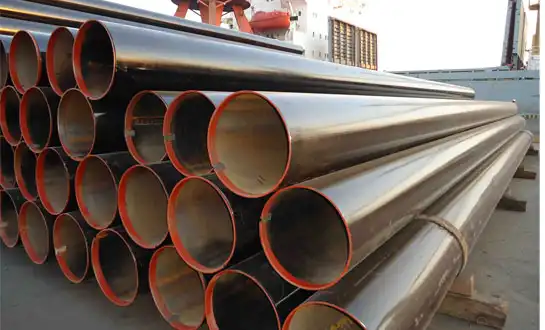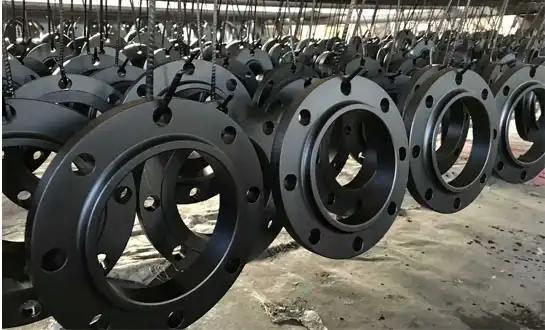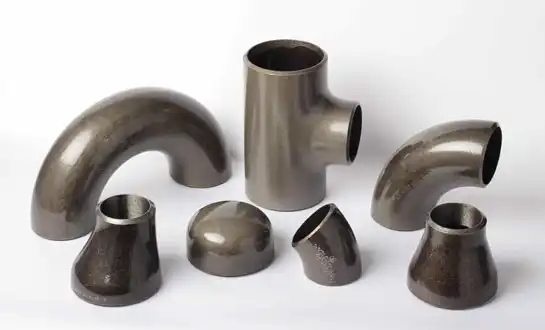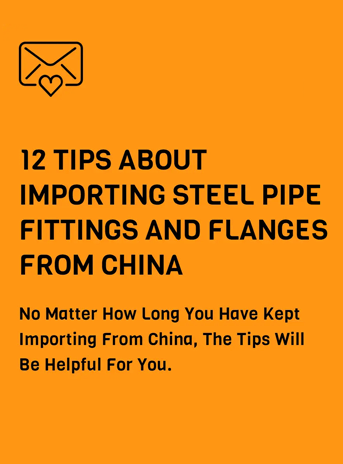Understanding lead time dynamics for custom pipe bends supplier enables effective project planning that balances schedule requirements, cost constraints, and quality expectations. By recognizing the factors that influence production duration and implementing strategies for timeline optimization, organizations can successfully integrate specialized components into complex piping systems without schedule disruptions. Proactive communication, realistic planning, and collaborative supplier relationships remain essential for managing custom pipe bends procurement effectively.
Lead Time for Custom Bends in Industrial Pipe Components Explained
When planning industrial piping installations that need parts that aren't available in normal catalogs, project managers and procurement specialists often run into problems. For keeping to project schedules, coordinating building activities, and avoiding expensive delays, it's important to know how long it takes to make customized fittings. A lot of the specialty parts in complicated pipe systems are custom pipe bends. This is especially true in industries like power generation, petrochemical processing, and large-scale infrastructure projects where standard radius elbows can't fit certain routing needs or lack of space. The lead time for these custom parts changes a lot depending on the material requirements, the difficulty of the fabrication process, the quality standards, and the manufacturer's capacity. Lead time for custom pipe bends encompasses the entire duration from order placement through delivery, typically ranging from four to twelve weeks depending on specification complexity and manufacturer workload. This timeframe includes engineering review and approval, material procurement, fabrication processes such as hot or cold bending, heat treatment, quality inspection, and surface preparation. Custom pipe bends with non-standard dimensions, exotic materials, or specialized testing requirements naturally extend production schedules beyond conventional timeframes. Factors influencing lead time include the manufacturer's current production backlog, raw material availability, required certifications, and whether the products require specialized tooling or forming dies. Understanding these variables enables project planners to establish realistic schedules and implement mitigation strategies that prevent custom pipe bends from becoming critical path items.
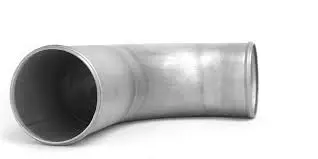
Factors Affecting Production Timeline
Material Selection and Procurement Challenges
The choice of material for custom pipe bends fundamentally impacts lead time due to variations in availability, processing requirements, and supply chain dynamics. Standard carbon steel materials such as ASTM A106 and API 5L grades typically maintain ready availability through distributor networks, allowing manufacturers to commence fabrication shortly after order confirmation. However, custom pipe bends requiring alloy steels, stainless grades, or specialized materials such as duplex stainless steel, nickel alloys, or titanium face significantly extended procurement periods. Mill lead times for specialty materials can range from eight to sixteen weeks, particularly for non-standard sizes or specific heat lots required for critical service applications. When projects specify products with material traceability requirements, impact testing at specific temperatures, or particular heat treatment conditions, manufacturers must source materials with certified mill test reports. Material shortages or allocation priorities during periods of high market demand further complicate procurement timelines. Manufacturers maintaining strategic inventory of common alloy grades can reduce this lead time component, but exotic materials almost invariably require mill-direct procurement. Projects requiring custom pipe bends from specific approved material manufacturers face even longer procurement cycles, as alternative sources cannot substitute without formal approval processes.
Fabrication Complexity and Dimensional Requirements
The geometric specifications of custom pipe bends directly influence production duration through their impact on fabrication methodology, tooling requirements, and process complexity. Simple products with moderate radius-to-diameter ratios and standard wall thickness can often be produced using existing mandrels and bending equipment, minimizing setup time and allowing relatively quick turnaround. Conversely, custom pipe bends featuring tight radius dimensions, large diameter pipe, or asymmetric configurations may necessitate specialized tooling fabrication before bending operations can commence. Tooling design, manufacturing, and validation can add four to six weeks to the lead time for the products requiring unique dies or mandrels. Hot bending processes for large diameter products involve heating the pipe section to forming temperature, applying controlled force through hydraulic equipment, and managing cooling rates to achieve desired mechanical properties. This process inherently requires more time than cold bending operations and typically applies to custom pipe bends exceeding 12 inches in diameter. Wall thickness variation management represents another complexity factor, as custom pipe bends must maintain minimum wall thickness throughout the bend radius while avoiding excessive thinning or wrinkling. Multiple-plane bends or compound curves require sophisticated CNC bending equipment and precise setup procedures that extend processing time.
Quality Assurance and Testing Protocols
Stringent quality requirements for custom pipe bends in critical applications substantially extend lead times through comprehensive testing and inspection protocols mandated by industry codes and project specifications. Non-destructive examination including radiographic testing, ultrasonic examination, magnetic particle inspection, and liquid penetrant testing requires specialized equipment, certified personnel, and interpretation time that can add one to three weeks to custom pipe bends production schedules. Hydrostatic pressure testing verifies the structural integrity of custom pipe bends by subjecting them to pressures exceeding design values, but requires test setup, pressurization equipment, and holding periods that consume production capacity. Positive material identification using optical emission spectroscopy confirms that custom pipe bends contain the specified alloy composition, preventing costly mix-ups. Dimensional inspection using coordinate measuring machines or laser scanning technology verifies that products meet geometric tolerances for bend radius, angle, ovality, and end preparation. Heat treatment verification through hardness testing or mechanical property testing ensures the products achieve required strength and toughness characteristics. Projects requiring custom pipe bends for sour service or low-temperature applications often mandate Charpy impact testing at specified temperatures. Third-party inspection witnessing requirements introduce coordination complexity and potential schedule delays if inspector availability does not align with production milestones for the products.
Strategies for Lead Time Reduction
Early Supplier Engagement and Design Collaboration
Initiating communication with manufacturers during the design phase provides opportunities to optimize custom pipe bends specifications for manufacturability while identifying potential lead time risks before commitments solidify. Design engineers working collaboratively with fabrication specialists can modify bend radii, adjust dimensional tolerances, or revise material selections to align with readily available resources without compromising functional requirements. This early dialogue regarding custom pipe bends allows manufacturers to provide realistic lead time estimates based on current shop loading and material availability. Manufacturers can suggest alternative approaches such as segmented bends fabricated from standard elbows when products lead times threaten critical project milestones. Early identification of long-lead materials enables parallel procurement activities where project teams can purchase specialty materials even before final fabrication contracts are executed, potentially reducing overall schedules by several weeks. Preliminary engineering review of custom pipe bends requirements allows manufacturers to identify specification ambiguities or conflicting requirements that would otherwise emerge during shop drawing review. Establishing approved manufacturer lists early in project development eliminates the qualification period from the critical path. Technology-enabled collaboration through three-dimensional modeling and digital data exchange accelerates communication cycles and reduces the iteration time traditionally associated with the products engineering and approval processes.
Inventory Management and Stock Programs
Progressive manufacturers maintain strategic inventories of semi-finished materials specifically positioned to accelerate custom pipe bends production for customers with urgent requirements. Pre-bent components in common configurations, standard radius curves in various sizes, and material blanks in popular grades allow manufacturers to bypass procurement delays and immediately commence final fabrication operations. Stock programs negotiated between repeat customers and suppliers can pre-position materials or even completed custom pipe bends based on historical usage patterns, dramatically reducing effective lead times when actual requirements materialize. Just-in-time manufacturing strategies supported by sophisticated planning systems allow manufacturers to anticipate products demand and initiate preliminary fabrication activities before formal purchase orders are received. Material certification programs where pre-approved steel grades receive blanket qualification eliminate the repetitive approval cycles that otherwise extend lead times for custom pipe bends on successive projects. Standardization initiatives within organizations can consolidate products specifications around preferred materials, dimensions, and quality requirements, allowing manufacturers to optimize inventory positions and fabrication processes for maximum efficiency.
Advanced Planning and Order Optimization
Sophisticated project planning techniques applied to custom pipe bends procurement can identify optimal ordering strategies that minimize overall schedule impact while managing cost and risk. Critical path analysis reveals which products represent genuine schedule constraints requiring expedited attention versus components with schedule float that can follow normal production timelines. Bulk ordering of similar custom pipe bends allows manufacturers to achieve production efficiencies through batch processing, with multiple components sharing setup time and tooling costs. Material tracking systems providing visibility into procurement status, fabrication progress, and quality gate completion enable proactive exception management rather than reactive crisis response when custom pipe bends encounter delays. Contingency planning identifies alternative suppliers, substitute materials, or design modifications that could be implemented if primary custom pipe bends procurement strategies encounter obstacles. Technology platforms enabling real-time collaboration and automated progress reporting transform products procurement from a transaction-based relationship into an integrated partnership focused on mutual success.
Managing Expectations and Project Coordination
Communication Protocols and Status Visibility
Effective communication regarding custom pipe bends lead times requires establishing clear protocols for information exchange, progress reporting, and exception management throughout the procurement and fabrication cycle. Milestone-based reporting provides visibility into custom pipe bends progression through key fabrication stages such as material receipt, bending completion, heat treatment, inspection, and shipping preparation. Exception reporting immediately alerts project teams when products encounter delays due to material shortages, equipment failures, or quality issues, allowing timely implementation of mitigation strategies. Digital collaboration platforms enable real-time status updates and document sharing for custom pipe bends without communication lag. Photographic documentation at various fabrication stages provides visual confirmation of progress and allows early identification of potential concerns. Regular progress meetings maintain alignment between manufacturer production teams and customer project managers, ensuring products remain appropriately prioritized within the shop workload.
Risk Mitigation and Contingency Planning
Prudent project management for custom pipe bends acknowledges inherent uncertainties in complex manufacturing processes and implements risk mitigation strategies. Schedule buffers specifically allocated for the products create flexibility that absorbs minor delays without impacting downstream construction activities. Value engineering exercises identify opportunities to substitute standard components for custom pipe bends where functional requirements permit, reducing both cost and schedule risk. Vendor qualification processes validate manufacturer capabilities, capacity, and quality systems before critical custom pipe bends orders are placed. Alternative design solutions maintained as contingency options allow rapid pivoting if the products procurement encounters fatal obstacles, with pre-engineered substitutes ready for immediate implementation.
Documentation and Compliance Requirements
The documentation requirements associated with custom pipe bends in regulated industries substantially impact lead times and require careful coordination. Material traceability documentation connects each products component to specific steel heats, mill certifications, and chemical/mechanical test results required by codes. Fabrication records document the specific processes applied to custom pipe bends including forming temperatures and heat treatment parameters. Inspection and test reports provide objective evidence that products meet dimensional tolerances and quality standards. Digital document management systems streamline the collection and distribution of this extensive documentation, reducing the administrative burden that could otherwise extend custom pipe bends lead times.
Conclusion
FAQ
1. What is the typical lead time for standard custom pipe bends?
Standard custom pipe bends in common carbon steel materials typically require six to eight weeks from order placement to delivery. This timeframe assumes normal material availability, straightforward fabrication without specialized tooling, and standard quality inspection requirements. Rush services may reduce this to four weeks with premium pricing, while complex specifications or exotic materials can extend timelines to twelve weeks or longer.
2. How can I expedite delivery of urgent custom pipe bends?
Expediting custom pipe bends requires early communication with manufacturers about urgent requirements, willingness to accept premium pricing for priority scheduling, and flexibility regarding material substitutions or design modifications that simplify fabrication. Some manufacturers maintain fast-track production cells specifically for rush orders. Confirming material availability before order placement and minimizing special testing requirements also accelerate delivery schedules.
3. What information do manufacturers need to quote accurate lead times?
Accurate lead time quotations for custom pipe bends require complete technical specifications including pipe size and schedule, bend radius and angle, material grade, end preparation requirements, surface finish expectations, quality inspection scope, certification needs, and delivery location. Providing three-dimensional models or detailed fabrication drawings eliminates ambiguity. Disclosing required delivery dates allows manufacturers to assess feasibility within their current production schedules.
4. Why do lead times vary between different manufacturers?
Custom pipe bends lead times vary based on manufacturer capacity, equipment capabilities, material inventory positions, geographic location, and specialization focus. Large fabricators with diverse equipment and extensive material stocks generally offer shorter lead times than smaller shops requiring material procurement for each order. Manufacturers specializing in products develop optimized processes that improve efficiency compared to general fabricators.
HEBEI RAYOUNG PIPELINE: Expert Custom Pipe Bends Manufacturer
At HEBEI RAYOUNG PIPELINE TECHNOLOGY CO., LTD., we excel in delivering precision-engineered custom pipe bends that meet the most demanding project requirements while maintaining competitive lead times. As an ISO 9001:2015-certified leader in the production of pipes and fittings, we use our advanced fabrication skills, smart material inventory, and efficient production planning to cut down on delivery times without sacrificing quality. We offer a wide range of products, such as buttweld fittings, reducers, flanges, and custom pipe bends made to your exact specs. We know that good infrastructure starts with materials that are reliable and arrive when they say they will. That's why we keep clear lines of communication open throughout the building process. Our GOST-R and SGS certificates show that we are dedicated to quality and following export rules. Whether your project requires custom pipe bends in standard carbon steel or exotic alloys, our experienced engineering team stands ready to collaborate on solutions that balance performance, schedule, and cost objectives. Contact us at info@hb-steel.com to discuss your products requirements and discover how HEBEI RAYOUNG's manufacturing expertise can support your project success.
References
1. American Society of Mechanical Engineers (2020). ASME B31.3 Process Piping. ASME International, New York.
2. Nayyar, M.L. (2000). Piping Handbook. Seventh Edition, McGraw-Hill, New York.
3. Chuse, R. and Eber, S.M. (1984). Pressure Vessels: The ASME Code Simplified. Sixth Edition, McGraw-Hill, New York.
4. Escoe, A.K. (2006). Piping and Pipeline Assessment Guide. Gulf Professional Publishing, Burlington, Massachusetts.
5. American Petroleum Institute (2018). API 5L Specification for Line Pipe. Forty-Sixth Edition, API Publishing Services, Washington DC.
6. Mohitpour, M., Golshan, H., and Murray, A. (2007). Pipeline Design and Construction: A Practical Approach. Third Edition, ASME Press, New York.

Need a quote? Want to see samples? Just say hello. We’re friendly. We’re fast. And we’re ready when you are.
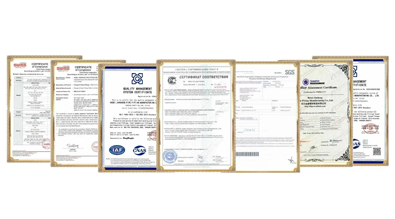
Welcome to RAYOUNG – Strong Pipes, Stronger Promise
